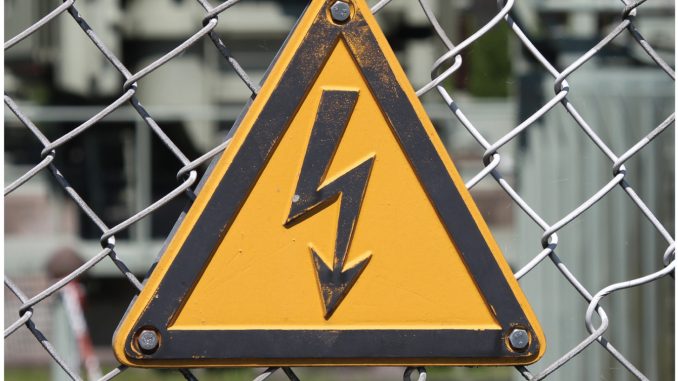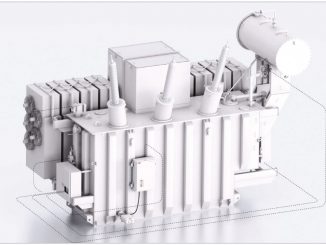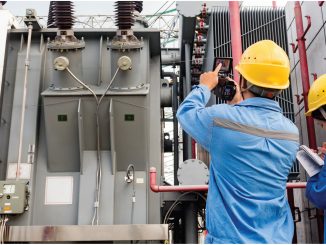
Although technology makes our lives easier, it comes with its own set of complexities. However, it is often the case that complexities are investigated seriously only once an alarm goes off. For instance, the recent transformer blast in Khatulai village, Rajasthan, has brought the issue of transformer safety to the forefront. While a number of initiatives are being taken in the power sector to ensure reliable power supply, it is of utmost importance that transformers, which form the heart of an electrical network, function properly.
As the country moves towards high voltage (HV) transmission lines, the challenges with respect to transformer safety will only get further amplified. Transformer failure can occur either due to a production fault at the manufacturer’s end or during the course of operation. The majority of high voltage transformer failures occur due to deterioration/breakdown of HV insulation, but transformer failures can also occur due to overloading, inadequate maintenance, moisture and line surges. Another reason for such failures is overloading of transformers due to illegal consumption of power by consumers. Since it is difficult to address challenges related to power theft, technical measures need to be resorted for maintenance of transformers. With the introduction of variable loading patterns into the grid , the lifespan of transformers has reduced, thereby hampering grid reliability. Since transformer safety is associated with a series of factors, it necessitates an improvement in the material design, and transformer management and maintenance approach.
Material design and standards
Typical transformers face several systemic issues due to harmonic loading, harmonic over-voltages, transformer saturation, and power ramp rate limits. This is expected to get further aggravated with the influx of renewable energy in to the grid. For instance, the transformers in solar power projects face steady state loading during inverter operation.
The Central Electricity Authority has laid down a set of standards regarding the size of a transformer based on different voltage levels. In particular, the standards specify the requirements to reduce risks related to the installed equipment. Going forward, it is important to design transformers that can handle the upcoming renewable energy load.
Step-up transformers for solar photovoltaic (PV) plants must be heat resistant and the sizing should neither be too large (as it may impact the project economics) nor too small (as it may hinder the despatch of the entire power that is generated). Meanwhile, transformers for wind power plants should be capable of operating in harsh environments such as high wind speeds, constant vibrations, and dusty as well as humid conditions.
In addition, to ensure the longevity of the transformer, transformer manufacturers must guarantee that their designs are capable of operating within the specified standards. In 2014, the Bureau of Indian Standards brought out the revised standard IS 1180:2014, “Outdoor Type Oil Immersed Distribution Transformers up to and including 2,500 kVA, 33 kV – Specification Part 1 Mineral Oil Immersed”. This standard extends the scope of coverage beyond 200 kVA, and up to and including 2,500 kVA and 33 kV. However, such standards need to be mandated by all discoms across the country so that uncertified and sub-standard quality transformers can be replaced to avoid any potential explosion or blast.
Insulating fluids
The insulating fluid is one of the key components to ensure reliable operations during the lifespan of transformers and petroleum-based mineral oil has been the most widely used liquid for transformer insulation because of its dielectric and cooling properties. Since several years, however, efforts are being made for the replacement of mineral oil as an insulating fluid to avoid failures caused by oil leakages. Also, such leakages also have a detrimental effect on the environment. Several types of alternative liquids are available in the electrical equipment market such as natural ester-based liquid, synthetic ester-based liquid and silicone oil.
Recently, the availability of synthetic ester as well as natural ester fluid, or so-called ‘vegetable ester fluid’ can be seen as a viable alternative to mineral oil. Natural esters are now produced in India. Ester fluids are a natural alternative providing environmental, safety and performance benefits over and above traditional mineral oils. In the event of an oil leakage, natural fluids biodegrade quickly in the environment and contain no harmful petroleum, silicones or other toxic materials. As compared to mineral oil which have a low fire point of 150ºC to 160ºC, ester fluids have a high flash point of 330°C which eliminates the risk of fire because of the self-extinguishing property of the fluid. Further, in terms of asset life, the chemical properties of natural ester dielectric fluids enhance transformer insulation performance and life expectancy, minimising the impact of moisture. In the case of natural ester-filled transformers, the life expectancy of insulation increases by six to eight times compared to mineral oil-filled transformers. Therefore, it leverages the useful life of insulation and the asset, thus, lowering the total cost of ownership.
Over time, the marketplace has come to better understand the advantages of natural ester fluid over mineral oil both through research and through industry usage on site performances with fire safety. Ester fluids have better moisture tolerance and thus retain the BDV of oil even at a higher PPM level.
In India, Tata Power Company Limited in partnership with Cargill and Schneider Electric introduced the natural ester filled 33/11 kV, 20 MVA power transformers in Mumbai distribution in 2015. In addition, as far as the standards are concerned, India adopted a new standard IS 16081, an equivalent to the IEC standard 61099, for the use of synthetic esters as dielectric fluids, which became effective from June 2013 and IS 16659 equivalent to IEC 62270 in May 2017. The standardisation will probably accelerate the implementation of such fluids.
Transformer maintenance
Any change in transformer technology has to be accompanied by change in the maintenance approach. With the evolution in maintenance philosophies for electrical equipment, it is possible to equip transformers with measuring devices to detect early signs of degradation/deterioration and send warnings to the operator to avoid an unscheduled outage. In order to stay ahead of the curve, utilities can undertake either preventive or condition-based maintenance for monitoring the transformer health.
Preventive maintenance consists of regular planned inspections and component replacements based on the product specific maintenance schedule. On the other hand, condition-based monitoring facilitates the initiation of suitable actions based on the current health condition of the transformer. It dictates that maintenance should be performed only when certain parameters show signs of decreasing performance. There are essentially two methods for condition monitoring, external and insulation. While external monitoring involves the monitoring of parameters such as physical damages, oil leakage, secondary current and voltage and varistor condition; insulation monitoring keeps a check on insulation resistance, electrical discharges and dissolved gas analysis.
Under preventive maintenance, one of the most essential maintenance functions for the routine testing of a transformer is transformer oil analysis. Regular oil analysis is useful in monitoring the oil’s physical properties and the concentration of various gases contained in the insulating oil. As part of the oil analysis, a number of tests can be performed such as dissolved gas analysis, dielectric breakdown voltage, and moisture analysis. These analyses enable early detection and diagnosis of possible problems including contact arcing, aging insulating paper and other latent faults, which might otherwise lead to unplanned outages.
A key critical function of the transformer oil is to provide electrical insulation and cooling. However, the presence of moisture can affect the insulation and result in product failure. Thus, selection of sealing material and design of sealing surfaces are crucial for ensuring a longer transformer life. Meanwhile, the concentration level of different gas combinations in the insulating oil can lead to arcing, corona and sparking. Based on the diagnosis, a scheduled outage can be planned to resolve the identified issues. Monitoring the bellow level and oil leakage is also crucial for ensuring the proper health of transformers. Apart from these tests, transformer oil needs to be checked at regular intervals for dielectric strength, water content, acidity and resistance.
With the advent of smart transformers and increased use of information technology applications in the electrical network, condition-based maintenance also allows storage of critical data on the cloud. The information combined with data analytics enable asset owners to make technical and business decisions.
Conclusion
Transformer safety involves numerous technical and non-technical aspects. From a maintenance perspective, a condition monitoring system is considered essential to ensure reliability and sustainability of the transformer. At the same time, manufacturers also have to make progress in controlling the generation and dissipation of the losses as well as using higher temperature materials to improve safety. The emergence of new technological tools combined with analytics is slated to play a key role in improving the lifespan of a transformer and ensuring its safety.



